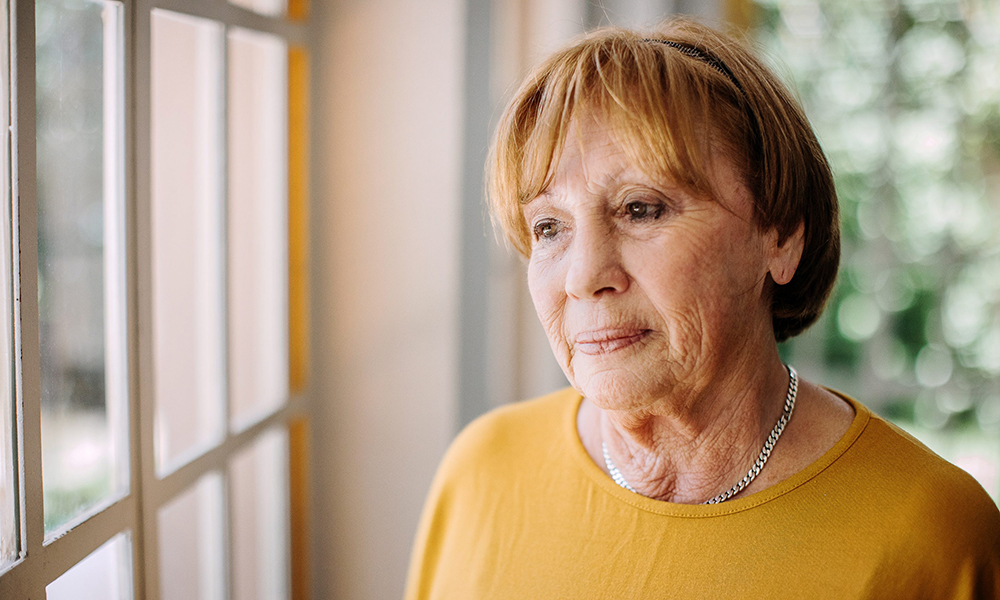
在退休储蓄方面,即使是牛市也无法助力女性赶上男性。
在一项最新研究中,研究人员对近期退休人员在经历牛市和熊市之后的资产价值进行了模拟分析。他们发现,牛市过后,女性退休储蓄中位数为18.46万美元,而熊市过后,男性退休储蓄中位数为19.94万美元。
研究数据显示,由于男性一开始的金融资产比女性多45%,因此即使在最佳市场条件下,女性也无法迎头赶上。女性退休储蓄中位数为18.5万美元,而男性为26.9万美元。
为了进行实验,研究人员估算了熊市和牛市的收益率。对于熊市,他们使用了1973年至1979年间标准普尔500指数和10年期债券的平均回报率,当时美国经济正遭受滞胀。牛市的代表是2017年至2022年的回报率,当时股市极其强劲。该分析还考虑到,这些老年人每年将从储蓄中提取7.5%的资金来支付生活费用,几乎每个人在退休后都会这样做。然后,他们将所有这些因素都应用于女性和男性的储蓄中位数估算过程中。
这份报告是由终身收入联盟(Alliance for Lifetime Income)委托撰写的,该联盟是一个退休计划服务机构的行业组织,研究了“婴儿潮高峰期人群”的退休准备情况。“婴儿潮高峰期人群”指的是1959年至1964年出生的人。“婴儿潮高峰期出生的人口”达3000万,大量人员将在未来5年内退休,占总人口相当大的比例。他们中是否有足够多的人在经济上做好退休准备,将对整个经济产生连锁反应。这些“婴儿潮高峰期人群”为退休储蓄的钱越多,美国社会保障网承受的压力就越小,更不必提及“婴儿潮高峰期人群”对退休后生活质量的期望了。
林肯金融集团(Lincoln Financial Group)首席执行官艾伦·库珀在有关该报告的小组讨论会上表示:“人们退休后,不想整天坐在椅子上看电视或网飞节目(Netflix)。他们实际上想走出去体验生活,做工作时无法做的事情。”
薪酬差距使女性更难退休
研究显示,即使是准备相对充分的“婴儿潮高峰期人群”,市场普遍看跌也会危及他们的退休生活。在不同的市场条件下,男性和女性的退休账户增长情况如何,说明了一生中薪酬不平等的影响有多持久,以及解决不平等有多困难。除了储蓄账户中位数比男性少8.4万美元之外,女性在所有有助于实现舒适退休生活的资产类别中的表现都不如男性。她们拥有的房屋价值比男性低5%,获得的社会保障福利比男性低25%。
保诚(Prudential)执行副总裁兼美国业务主管卡罗琳·费尼表示,要帮助女性建立更好的退休积蓄,就必须首先解决根本性原因。
其中包括性别薪酬差距和主要面向男性的金融业。皮尤研究中心(Pew Research)的数据显示,截至2023年3月,男性每赚1美元,女性只能赚82美分。
费尼在小组讨论中说:“这种薪酬差距会导致储蓄减少,这是现实。”
她补充说,一些研究表明,在投资方面,女性的平均风险承受能力较低。
女性在退休后可能面临更高的支出
费尼的观点曾一度被认为是金融界的标准假设。然而,近年来这一论断变得更有层次。《哈佛商业评论》最近的一项研究发现,在影响力投资方面,女性的风险承受能力实际上高于男性。其他研究表明,女性更明智,这可能会被简单地归结为规避风险。还有更多的证据表明,女性在投资方面更加谨慎,因为她们觉得自己可以获得的资源和建议较少。
金融业被认为是“男性俱乐部”,再加上“女性不如男性精于理财”的刻板印象,这意味着她们在获得投资建议方面往往得不到全面的服务支持。这使得女性比许多男性更难掌握合适的专业知识,而男性也可能不是金融专家。理财规划公司信安(Principal)的一项研究显示,三分之二的男性表示,他们很容易获得高质量的投资产品,而女性的这一比例只有39%。
费尼说:“当然,如果把这些因素综合起来,女性要想在退休后过上有经济保障的生活就会困难得多。”
更糟糕的是,女性退休后不仅资金更少,而且由于她们寿命更长,更有可能成为照顾者,她们的开支也会增加。大多数美国人都不善于估计他们的退休生活将持续多久。如果女性不仅要照顾自己,还要照顾他人,即使到了晚年,这种差距只会变得更加严重。根据家庭照顾者联盟(Family Caregiver Alliance)的数据,超过75%的照顾者是女性。即使是作为照顾者的职业女性,她们的退休生活也会受到冲击,因为其经济负担会加重(通常是在工资已经较低的情况下),这意味着她们为自己的晚年储蓄的资金会减少。
为了减轻退休准备的难度,费尼有一个简单的建议:寻求帮助。她说:“世界上没有愚蠢的问题。”(财富中文网)
译者:中慧言-王芳
在退休储蓄方面,即使是牛市也无法助力女性赶上男性。
在一项最新研究中,研究人员对近期退休人员在经历牛市和熊市之后的资产价值进行了模拟分析。他们发现,牛市过后,女性退休储蓄中位数为18.46万美元,而熊市过后,男性退休储蓄中位数为19.94万美元。
研究数据显示,由于男性一开始的金融资产比女性多45%,因此即使在最佳市场条件下,女性也无法迎头赶上。女性退休储蓄中位数为18.5万美元,而男性为26.9万美元。
为了进行实验,研究人员估算了熊市和牛市的收益率。对于熊市,他们使用了1973年至1979年间标准普尔500指数和10年期债券的平均回报率,当时美国经济正遭受滞胀。牛市的代表是2017年至2022年的回报率,当时股市极其强劲。该分析还考虑到,这些老年人每年将从储蓄中提取7.5%的资金来支付生活费用,几乎每个人在退休后都会这样做。然后,他们将所有这些因素都应用于女性和男性的储蓄中位数估算过程中。
这份报告是由终身收入联盟(Alliance for Lifetime Income)委托撰写的,该联盟是一个退休计划服务机构的行业组织,研究了“婴儿潮高峰期人群”的退休准备情况。“婴儿潮高峰期人群”指的是1959年至1964年出生的人。“婴儿潮高峰期出生的人口”达3000万,大量人员将在未来5年内退休,占总人口相当大的比例。他们中是否有足够多的人在经济上做好退休准备,将对整个经济产生连锁反应。这些“婴儿潮高峰期人群”为退休储蓄的钱越多,美国社会保障网承受的压力就越小,更不必提及“婴儿潮高峰期人群”对退休后生活质量的期望了。
林肯金融集团(Lincoln Financial Group)首席执行官艾伦·库珀在有关该报告的小组讨论会上表示:“人们退休后,不想整天坐在椅子上看电视或网飞节目(Netflix)。他们实际上想走出去体验生活,做工作时无法做的事情。”
薪酬差距使女性更难退休
研究显示,即使是准备相对充分的“婴儿潮高峰期人群”,市场普遍看跌也会危及他们的退休生活。在不同的市场条件下,男性和女性的退休账户增长情况如何,说明了一生中薪酬不平等的影响有多持久,以及解决不平等有多困难。除了储蓄账户中位数比男性少8.4万美元之外,女性在所有有助于实现舒适退休生活的资产类别中的表现都不如男性。她们拥有的房屋价值比男性低5%,获得的社会保障福利比男性低25%。
保诚(Prudential)执行副总裁兼美国业务主管卡罗琳·费尼表示,要帮助女性建立更好的退休积蓄,就必须首先解决根本性原因。
其中包括性别薪酬差距和主要面向男性的金融业。皮尤研究中心(Pew Research)的数据显示,截至2023年3月,男性每赚1美元,女性只能赚82美分。
费尼在小组讨论中说:“这种薪酬差距会导致储蓄减少,这是现实。”
她补充说,一些研究表明,在投资方面,女性的平均风险承受能力较低。
女性在退休后可能面临更高的支出
费尼的观点曾一度被认为是金融界的标准假设。然而,近年来这一论断变得更有层次。《哈佛商业评论》最近的一项研究发现,在影响力投资方面,女性的风险承受能力实际上高于男性。其他研究表明,女性更明智,这可能会被简单地归结为规避风险。还有更多的证据表明,女性在投资方面更加谨慎,因为她们觉得自己可以获得的资源和建议较少。
金融业被认为是“男性俱乐部”,再加上“女性不如男性精于理财”的刻板印象,这意味着她们在获得投资建议方面往往得不到全面的服务支持。这使得女性比许多男性更难掌握合适的专业知识,而男性也可能不是金融专家。理财规划公司信安(Principal)的一项研究显示,三分之二的男性表示,他们很容易获得高质量的投资产品,而女性的这一比例只有39%。
费尼说:“当然,如果把这些因素综合起来,女性要想在退休后过上有经济保障的生活就会困难得多。”
更糟糕的是,女性退休后不仅资金更少,而且由于她们寿命更长,更有可能成为照顾者,她们的开支也会增加。大多数美国人都不善于估计他们的退休生活将持续多久。如果女性不仅要照顾自己,还要照顾他人,即使到了晚年,这种差距只会变得更加严重。根据家庭照顾者联盟(Family Caregiver Alliance)的数据,超过75%的照顾者是女性。即使是作为照顾者的职业女性,她们的退休生活也会受到冲击,因为其经济负担会加重(通常是在工资已经较低的情况下),这意味着她们为自己的晚年储蓄的资金会减少。
为了减轻退休准备的难度,费尼有一个简单的建议:寻求帮助。她说:“世界上没有愚蠢的问题。”(财富中文网)
译者:中慧言-王芳
Even a bull market can’t help women catch up to men when it comes to retirement savings.
In a new study released Thursday, researchers offered an analysis that modeled the asset values recent retirees would have after a bull market and a bear market. They found that after a bull market, the median value of women’s retirement savings would be $184,600, while men would have $199,400 after a bear market.
Because men start off with 45% more financial assets than women, according to the study’s data, women were unable to catch up in even the best market conditions. The median retirement savings for women is $185,000, while for men it is $269,000.
To run their experiment the researchers estimated rates of return for a bear market and a bull market. For the bear market, they used the average return rate of the S&P 500 and 10-year bonds from 1973 to 1979, when the economy was suffering from stagflation. The stand-in for a bull market featured return rates from 2017 to 2022, when the stock market was particularly robust. The analysis also factored in that the seniors in question would withdraw 7.5% of their savings each year to fund their living expenses, as virtually everyone does during retirement. They then applied all those factors to the median savings for women and men.
The report, commissioned by the Alliance for Lifetime Income, a trade organization of retirement plan servicers, examined the retirement readiness of “peak boomers,” defined as people born between 1959 and 1964. Numbering 30 million, “peak boomers” represent an exceptionally large segment of the population that is poised to retire en masse over the next five years. Whether or not enough of them are financially prepared to retire will have ripple effects across the economy. The more money these peak boomers have saved for retirement, the less strain the U.S.’s social safety net will be under—to say nothing of what kind of quality of life these boomers might expect in retirement.
“When people retire they don’t just want to sit in a chair all day long, and watch TV or Netflix,” said Lincoln Financial Group CEO Ellen Cooper, during a panel about the report on Thursday. “They actually want to go out and experience life and do the things they weren’t able to do when they were working.”
The pay gap makes retirement harder for women
A broadly bearish market would jeopardize even relatively well prepared peak boomers, according to the research. How much the retirement accounts of men and women grow in different market conditions illustrates how long-lasting the effects of a lifetime of pay inequities can be, and how difficult to overcome. Aside from having $84,000 less in their median savings accounts, women fare worse than men across all asset classes that can contribute to a comfortable retirement. They owned homes that were 5% less valuable and got Social Security benefits that were 25% lower than men’s.
Helping women build better nest eggs in retirement requires addressing the root causes first, said Caroline Feeney, Prudential executive vice president and head of U.S. businesses.
They include the gender pay gap and a financial industry geared primarily toward men. As of March 2023, women earned 82 cents for every dollar that men did, according to data from Pew Research.
“This pay gap translates into lower savings—that’s a reality,” Feeney said during the panel.
She added that some research has shown women on average have a lower risk tolerance when it comes to investing.
Women can face higher expenses during retirement
Feeney’s point was once considered a standard assumption in financial circles. However, in recent years that assertion has become more layered. A recent study from the Harvard Business Review found that when it came to impact investing, women actually exhibited a higher risk tolerance than men. Other research indicates women are more judicious, which can get reduced to simply being risk-averse. There’s also more evidence pointing to the fact that women feel more cautious about investing because they feel as if they have fewer resources and advice available to them.
The financial industry’s reputation as a boys’ club, along with the stereotype that women are less money-savvy than men, has meant they’re often underserved when it comes to investment advice. That makes it harder for women to find the right expertise than many men, who also may not be financial experts. Two-thirds of men say they have easy access to high-quality investment products compared with just 39% of women, according to a study from financial planner Principal.
“You pull all of that together, of course, it makes it far more difficult for women to be in a position to live a secure financial retirement,” Feeney said.
To make matters worse, women not only have less money in retirement but they can have more expenses as well because they live longer and are more likely to be a caregiver. Most Americans do a poor job of estimating how long their retirement will last. That shortfall only gets worsened when women have to care for someone else beyond just themselves, even in old age. More than 75% of caregivers are women, according to the Family Caregiver Alliance. Even working women who are caregivers can take a hit to their retirement, because they have an added financial burden (often on an already lower salary), which means they have less to sock away for their golden years.
To mitigate the difficulties of preparing for retirement, Feeney has simple advice: ask for help. “There are no silly questions,” she said.






